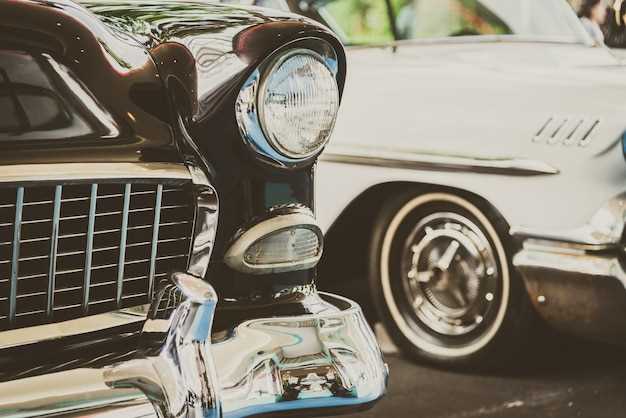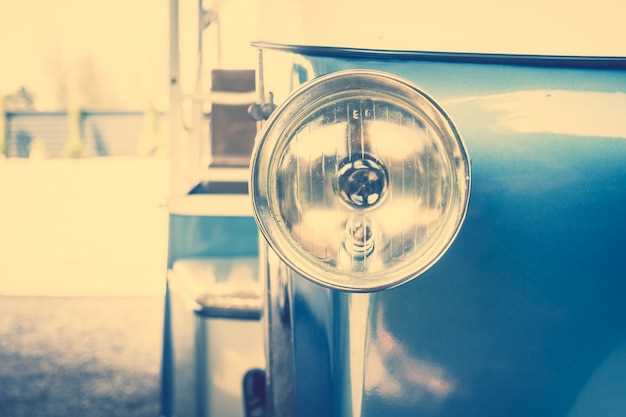Photography Tips for Classic Car Shows

Attending a classic car show can be an exhilarating experience for automotive enthusiasts and photographers alike. The array of beautifully restored vehicles, each with its own unique history and character, presents a perfect opportunity to capture stunning images. However, to truly convey the beauty and essence of these classic cars, one must employ effective photography techniques tailored for such events.
When photographing cars at an event, it is crucial to focus on the details that make each vehicle special. From the glossy finish of the paint to the intricate designs of the interiors, these elements can elevate a photograph from simple documentation to an artful portrayal. Understanding how to frame your shots and manipulate natural light can significantly enhance your images, making them compelling and visually engaging.
This article will explore essential photography tips specifically designed for capturing stunning shots of classic cars at shows. Whether you are a novice shutterbug or a seasoned professional, these insights will help you hone your skills and produce images that showcase the elegance and timelessness of these automotive treasures.
Selecting the Best Time of Day for Dynamic Lighting

Choosing the right time of day for car photography is crucial for capturing stunning images at a classic car show. The quality and intensity of natural light can significantly influence the final outcome of your photos. Early morning and late afternoon, often referred to as the “golden hours,” provide soft, warm light that highlights the curves and features of classic cars beautifully.
During these times, the sun is low on the horizon, casting long shadows and creating a dynamic interplay of light and shade. This can add depth to your images, making the vehicles appear more three-dimensional. In contrast, shooting during midday often results in harsh lighting, which can wash out colors and create unflattering shadows that obscure important details.
Additionally, consider the weather conditions. Overcast days can diffuse sunlight, resulting in even and soft lighting that works well for car photography. This type of lighting allows for rich, vibrant colors while minimizing glare on polished surfaces. However, avoid shooting in direct sunlight on clear days, as it can lead to unwanted reflections and hotspots that detract from the vehicle’s aesthetic.
Plan your shots according to the time of day and prevailing weather conditions to achieve the best possible results. By selecting optimal lighting, you’ll enhance the appeal of classic cars and elevate your photography to new heights.
Framing Techniques to Highlight Classic Car Details

When attending a classic car show, effective photography involves more than just capturing the entire vehicle; it requires an artistic approach to framing that accentuates its unique details. To achieve stunning results, consider employing various framing techniques that draw attention to specific elements of the cars.
One effective method is to use foreground elements to create depth. By incorporating objects like fences, flowers, or even other cars in the foreground, you can lead the viewer’s eye towards the classic car, transforming a simple shot into a layered composition. This technique is particularly advantageous in outdoor events, where natural surroundings can enhance the visual story.
Another approach is the close-up shot. Zoom in on intricate details such as the chrome accents, distinctive badges, or unique wheel designs. A shallow depth of field can blur the background, emphasizing the textures and colors of the car, making these features pop in your photography.
Consider the rule of thirds when composing your images. Positioning key elements of the car, such as the headlights or grille, along the grid lines or intersection points creates a balanced and engaging photograph. This technique encourages viewers to explore the image more thoroughly, appreciating the finer details of the classic automobile.
Lastly, framing through natural elements such as trees or arches can create a pleasing border around the car, focusing the viewer’s attention on the subject while adding context to the scene. Utilizing these techniques will enhance your classic car show images, transforming them into captivating pieces that highlight the elegance and craftsmanship of these remarkable vehicles.
Utilizing Backgrounds to Enhance Vehicle Aesthetics
When photographing classic cars, the background plays a pivotal role in accentuating the beauty and uniqueness of the vehicle. Choosing the right backdrop can elevate your photography, making your shots more compelling and visually appealing.
Here are some key considerations for selecting and utilizing backgrounds effectively:
- Complementary Colors: Look for backgrounds that harmonize with the car’s color. Contrasting colors can make the vehicle stand out, while similar hues can create a more cohesive and elegant look.
- Texture and Detail: Textured surfaces, such as brick walls or rustic fences, can add depth to your photos. They can contrast with the smooth lines of the car, creating a dynamic image.
- Simplicity Matters: A busy background can distract from the car. Opt for simple and uncluttered settings that allow the vehicle to take center stage.
- Contextual Locations: Place the car in environments that tell a story. For instance, a vintage car in front of an old diner or a scenic landscape can evoke nostalgia and enhance the overall mood of the shot.
- Natural Elements: Incorporating natural backgrounds like trees or mountains can provide a stunning contrast to the car’s metallic finish. Look for locations with interesting lighting conditions, such as golden hour, to enhance your images further.
Experiment with various setups and backgrounds to find the perfect complement for each car’s distinct character. Careful background selection can transform your photography, making your classic car shots truly stunning.



